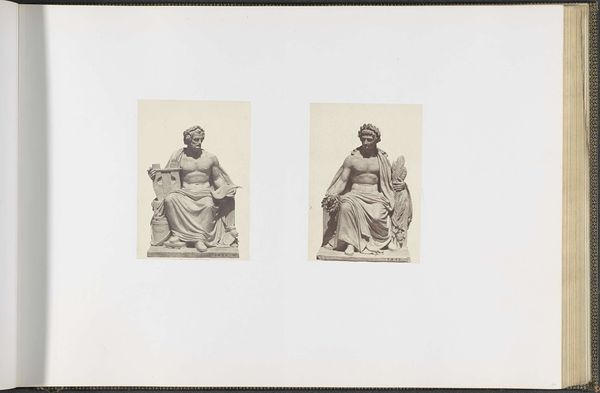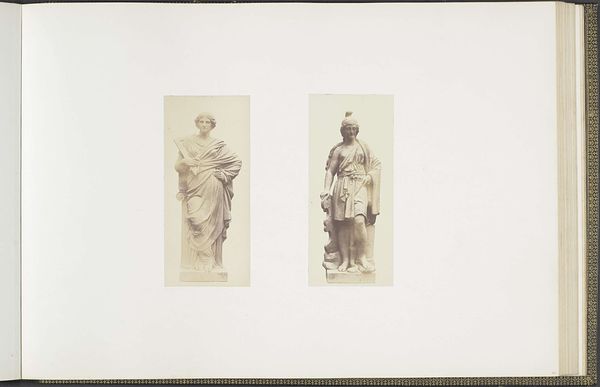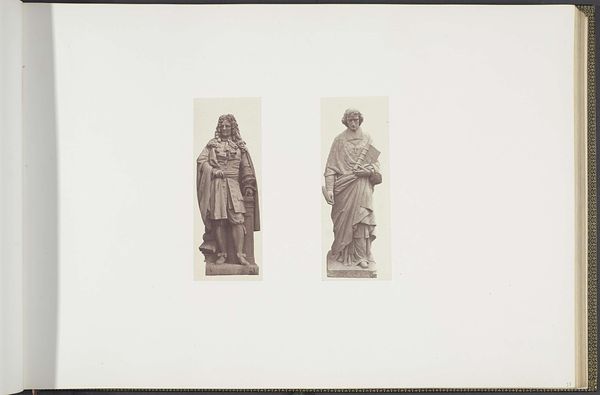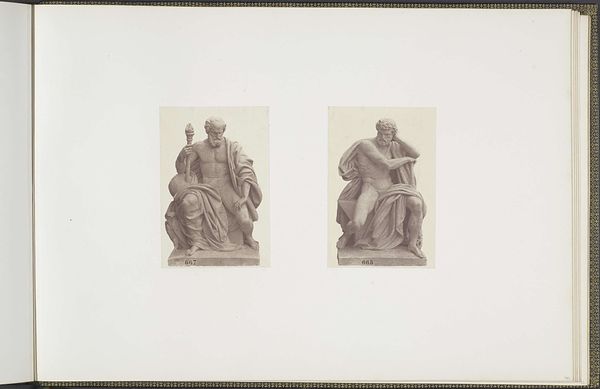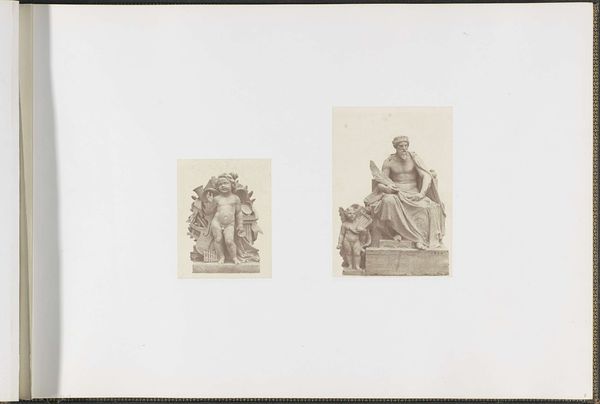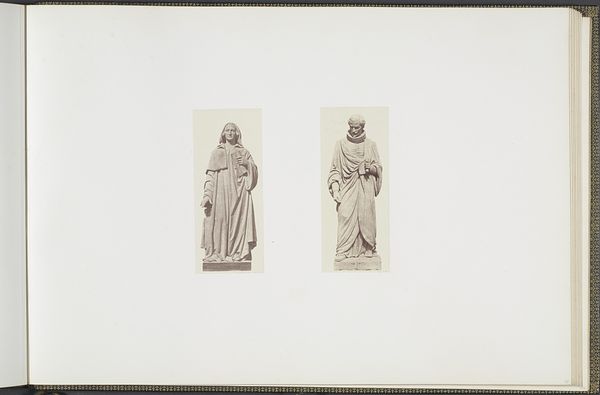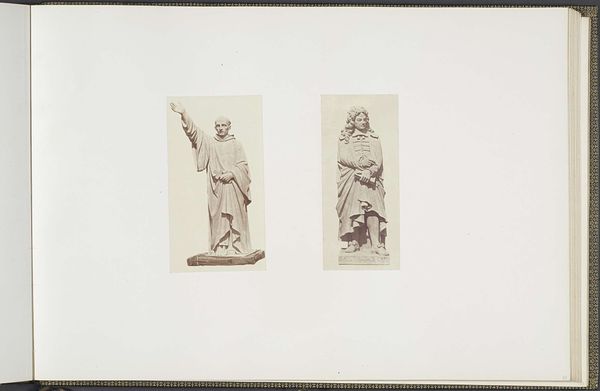
Gipsmodellen voor beeldhouwwerken op het Palais du Louvre: links "Le Travail manuel" en rechts "L'Art" door Auguste Ottin c. 1855 - 1857
0:00
0:00
photography, sculpture, gelatin-silver-print
#
portrait
#
neoclacissism
#
photography
#
sculpture
#
gelatin-silver-print
#
history-painting
Dimensions: height 382 mm, width 560 mm
Copyright: Rijks Museum: Open Domain
Editor: We are looking at "Gipsmodellen voor beeldhouwwerken op het Palais du Louvre," a gelatin silver print by Edouard Baldus, taken around 1855-1857. It depicts plaster models for sculptures meant to adorn the Louvre. I'm struck by how this photograph documents an artwork that itself celebrates artistic creation. What's your take on it? Curator: Well, it's fascinating to see photography being used in the mid-19th century to document and disseminate images of public art. Consider the socio-political context: the Louvre was being rebuilt and expanded under Napoleon III, and these sculptures, "Le Travail manuel" and "L'Art" by Auguste Ottin, were integral to projecting an image of French cultural and imperial power. Editor: So the photograph served almost as a promotional tool, showing off France's artistic prowess? Curator: Precisely. Baldus was frequently commissioned by the government. The photographs of the sculptures reinforced a specific narrative about France's role as a leader in the arts, directly connecting it to its national identity and its claim on European dominance. This neoclassical style also intentionally harkened back to a glorified past, lending authority to the present regime. Editor: It’s interesting to think about how photography could be employed to build and promote those nationalistic messages, making art accessible, albeit through a specific lens. I had been focusing solely on the statues themselves. Curator: Indeed, it shows that a photo is so much more than simply reflecting the object, right? Editor: Definitely. It gives me much to think about in regard to the cultural and historical impact of imagery in society, as well as how institutions influence and direct artistic production. Curator: Agreed, that makes this image relevant to how museums display art today.
Comments
No comments
Be the first to comment and join the conversation on the ultimate creative platform.

